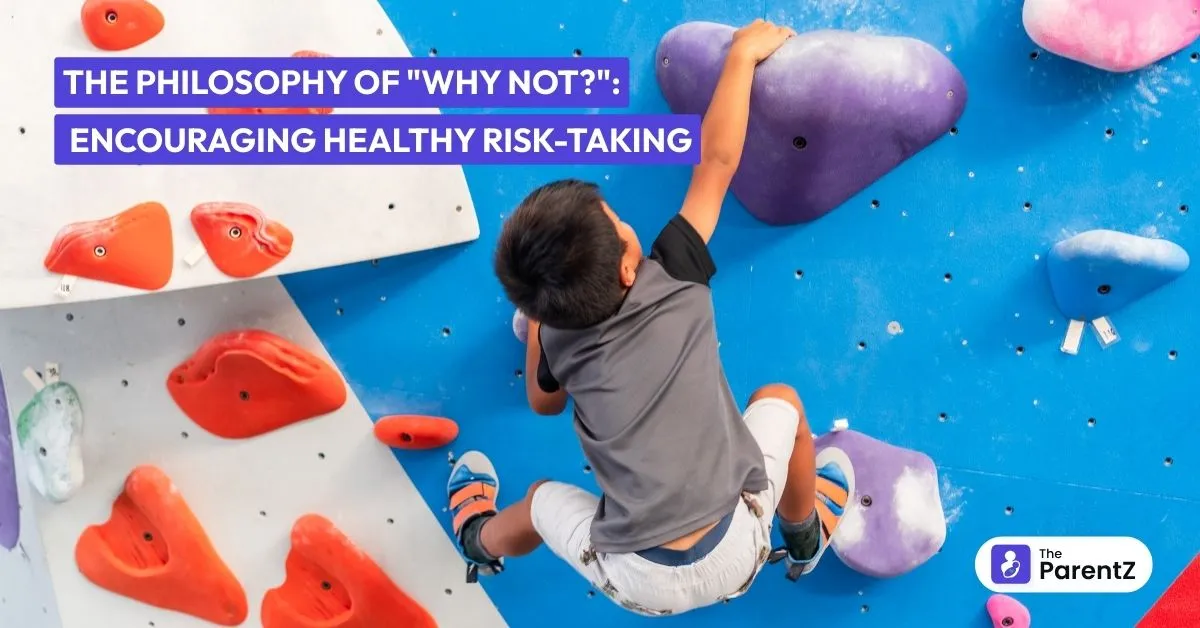There’s something magical about the phrase “Why not?”—a kind of gentle rebellion against fear, a quiet dare to the comfort zone. And when you say it to your child, you’re not just offering permission. You’re opening a door.
The truth is—the world is built on safe decisions: Don’t climb too high. Don’t get your clothes dirty. Don’t make a fool of yourself. But if you look closely, many of the world’s most creative, resilient people didn’t grow up under the rule of “Don’t.”
Read this article to explore how you can encourage healthy-risk taking skills in kids.
What “Why Not?” Really Means
“Why not?” is about possibility.
It’s about letting your kid try out for the school play even if they’ve never acted before. It’s about letting them take the training wheels off, start their own lemonade stand, or wear two different socks because they think it looks cool.
It’s about small risks that teach big lessons: You might fall. You might fail. But you might also fly.
The Fear that Holds Us Back
As parents, our instinct is to protect. We imagine danger in every unknown corner—emotional, physical, even social. We fear embarrassment for them, disappointment, even scraped knees and bruised pride.
But here’s the truth: shielding your child from every fall won’t teach them how to stand taller. It just teaches them to stay small.
Raising Brave, Not Fearless Kids
Encouraging healthy risk-taking doesn’t mean pushing your child into the deep end. It means standing beside them while they wade in.
It means letting them solve their own conflicts, even if the outcome isn’t perfect. It means encouraging curiosity, even if it leads to messes or mistakes, allowing small failures, so they can learn resilience and flexibility, and cheering effort over outcome, so they value the try, not just the win.
And sometimes, it means modeling it yourself. Let them see you trying something new, laughing when it doesn’t work, trying again anyway.
Letting Go of the Perfect Path
Sometimes, we parent like we're preparing our children for a job interview at age ten. We forget that real growth often comes from detours, weird hobbies, and things that don’t make sense on a college application.
But the more you say “Why not?”, the more your child learns to chase wonder instead of approval. They begin to trust their gut, stretch their ideas, take pride in exploration—not perfection.
Conclusion
Next time your child asks to try something different, instead of jumping straight to no, try whispering “Why not?”—and mean it.
You might be surprised what happens next. They may fall. They may soar. But either way, they’ll learn. And it all starts with two simple words.








Be the first one to comment on this story.